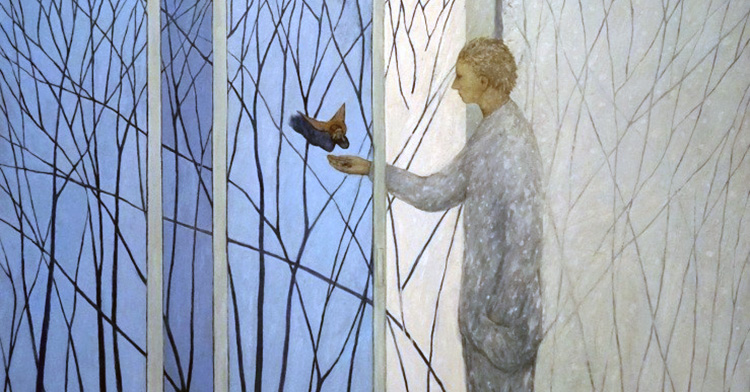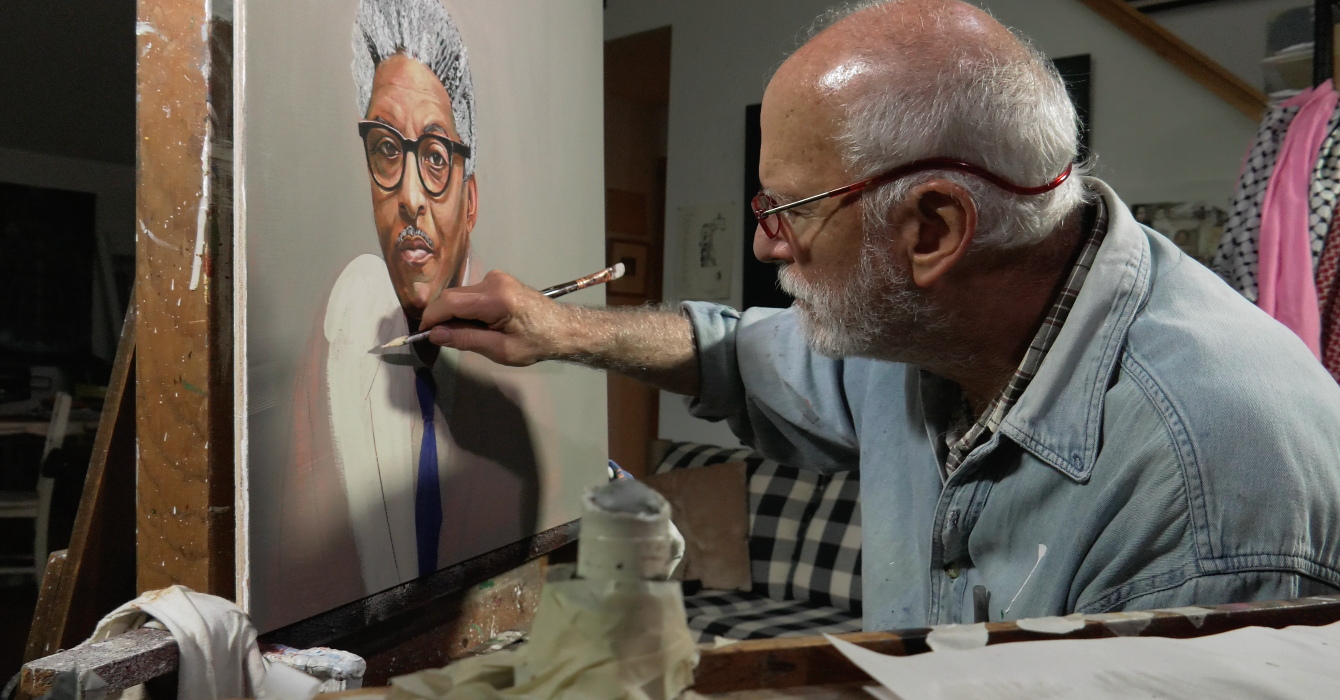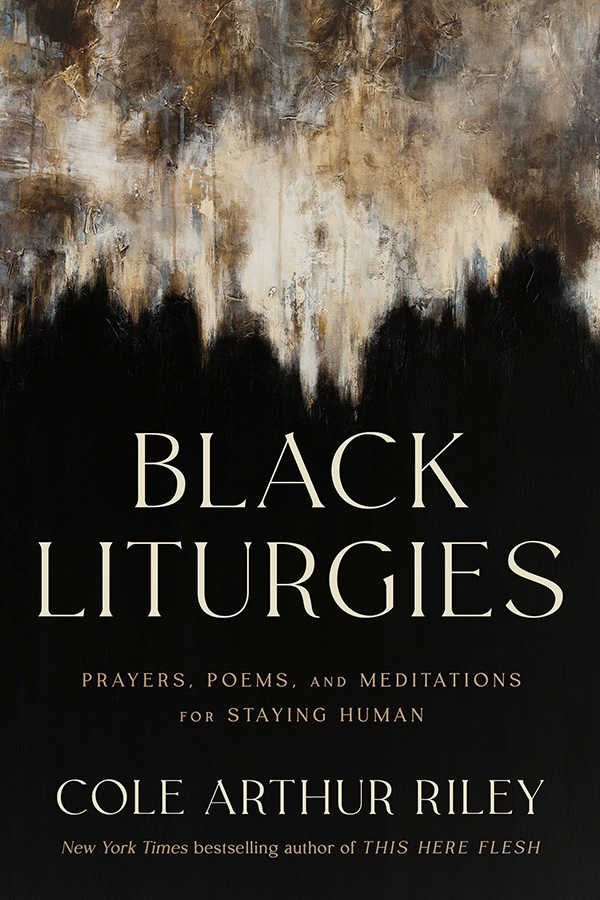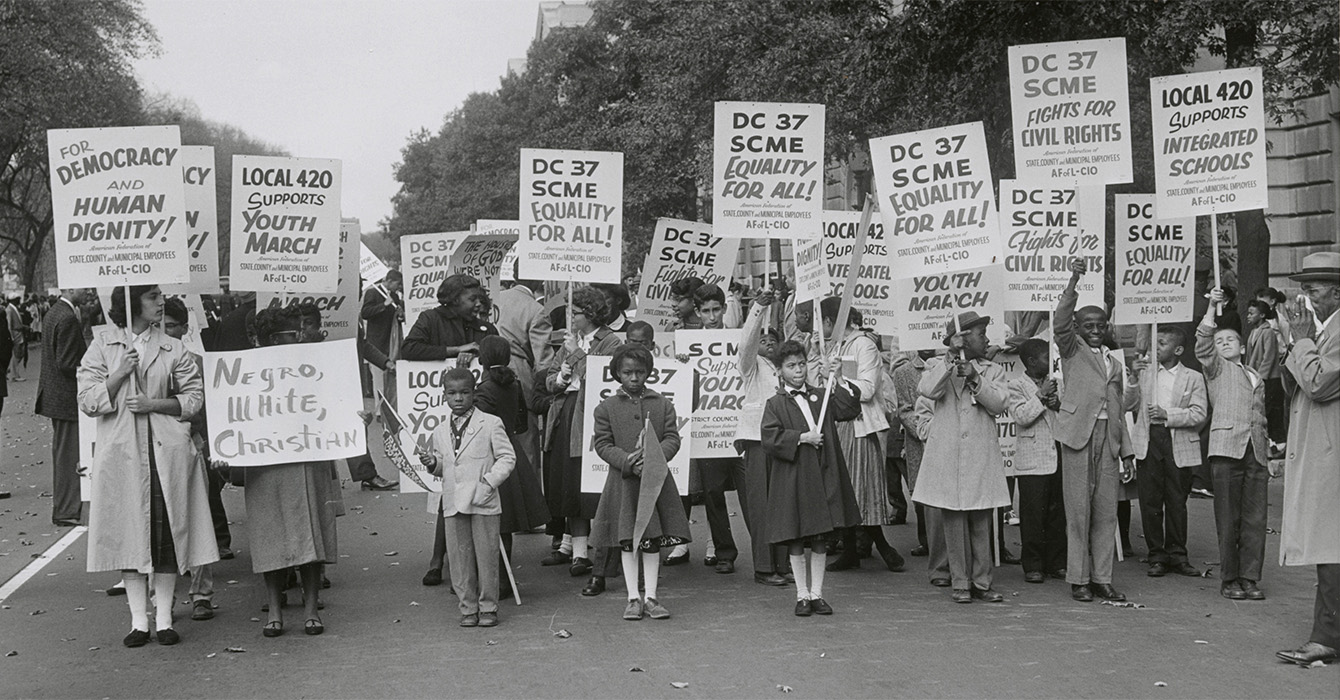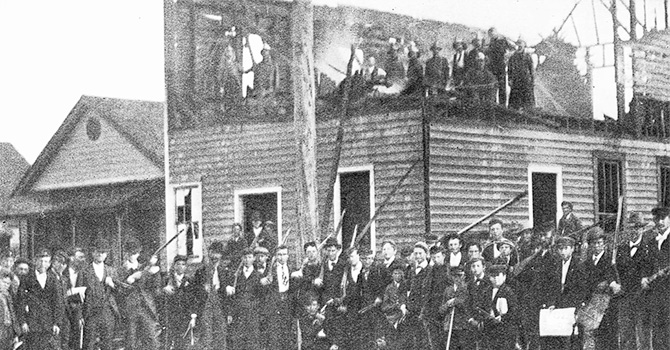Edouard Duval-Carrié is a painter, sculptor and curator. His work, often political, combines elements of African fables, classical mythology, Haitian history and contemporary events, as well as Christian and Vodou imagery.
Born in Port-au-Prince, Haiti, Duval-Carrié was educated at the École Nationale Supérieure des Beaux Arts in Paris and at McGill University and Loyola College (now Concordia University) in Montreal. He now lives in Miami.
Duval-Carrié visited Duke University to work with students on a collaborative art project and to give a talk in the Provost’s Lecture Series, “Natural Disasters and Human Responses.”
He spoke to Faith & Leadership about his work and how, as an artist, he is helping with the recovery from the devastating 2010 earthquake in Haiti. The following is an edited transcript.
Q: For someone who doesn’t know about Haiti and wants to help with the earthquake recovery -- maybe someone going with a church or leading a group as a pastor or directing, as a denominational leader, a number of churches -- if that person went to your website or saw your art in a museum, what would you want them to learn about Haiti?
First of all, that it’s a much more complex place than people usually imagine. At this point, after two centuries of successive political, social and natural disasters, it’s a very complex place with people who have a very complex way of looking at things.
Sometimes it is too complex -- things could be solved in a different way. The United States has one thing I find very special, and very important, and that is the pragmatism in this country. This country’s a country of pragmatists.
If they could instill that into Haitians, that would be something that is the most important thing, more than anything else.
Simple things: You want to put that water from there to there? Let’s see how we can do it in a very intelligent way. And this is what this country knows how to do best, and that’s what I hope -- whenever an American goes down there, please do tell [the Haitians]: “We know how to do this better than you, so let us do it for you.”
Q: We’re the land of the engineers, not the artists?
Exactly -- the pragmatists. Sometimes it takes common sense, and some people get lost in all sorts of other things, other than common sense.
Q: Given the problems in Haiti, including the earthquake, why be an artist? Why not be feeding people or raising money?
I can do all of the above -- raise money, create awareness -- by being what I am. I’ve managed to do all of the above. I do work in many ways in raising awareness of Haiti.
For example, right after the earthquake, I organized a fund called the Haitian Art Relief Fund.
I realized that the artists were in dire straits and so I pinpointed where I wanted my efforts to go. I asked my colleagues -- not just Haitians, everybody in Miami, all my artist friends -- to provide me a piece of art that I sold eventually at an art fair.
We’ve raised $40,000 through this effort, and we’ve managed to put two, three exhibits up now, by commissioning artists in Haiti, in very key places. For example, at the airport in Miami, the major international arrival, we have an exhibit that will be there for at least six or eight months called “Hands of Haiti,” which celebrates Haiti and presents the best Haiti has to offer.
In organizing that, I managed to commission about five artists to create new work to be presented there. I cannot compete with the Red Cross or anything like that, so I did it strictly within my means and within my field. I think that now the show is being proposed to all major airports, not only in the U.S. but in Europe.
There are things that artists can do that can help the situation, elucidate the problems and raise money for -- I mean, this was my thing and I did it my way, and it worked.
Q: How are you working with artists in Haiti?
Well, for me, it’s the collaborative effort that’s important. For example, when I said that I was commissioning artwork down in Haiti, I was looking, first of all, at which artists are using the most hand labor in the process.
You want to have art, but which ones create the most where the money will circulate the most? It’s one artist’s vision, but some of the ateliers have 15 to 20 people at a time working on one piece, and all these people they have to pay.
We know that commissioning artwork from these kinds of individuals goes a much longer way than others, not that I say they are better or worse, do you understand? I know that at least for the moment, there’s so much need, so that spreading whatever wealth there is, it’s the best way to go. If one can provide help to those ateliers, that’s a wonderful way to help in a small way.
There is an interest in Haitian art right now internationally. I’ve managed to make sure that all my contacts are aware that things like that can happen.
Q: Collaboration isn’t necessarily something that one would think about in terms of art -- fine art in particular.
Yes. I’m a fine artist, and in my case, I usually am alone in my studio doing my own work. But in a place like Haiti, there are the popular arts, which are very pervasive, and that’s what I’m talking about mainly.
I’m a very democratic kind of individual personally, and I like to think that these people have their place in the sun, in the art world, in the glories of the art world. I don’t separate things.
Q: Haiti has a fascinating and rich culture, of course, and faith traditions of various kinds are part of that, including Christianity and Vodou, which combines Catholicism, West African and Caribbean beliefs.
Absolutely. Haitians will tell you very clearly: “We are 99 percent Catholic or Christian and 99 percent Vodou.” They’re such in dire straits and have so many problems that they will grab on to anything that will give them solace and maybe some sort of sense of well-being and create a society that might help them survive in a dignified way.
Q: Are you addressing the earthquake in your own artistic work?
I have done it. There is an organization in Miami -- it’s more of a political organization -- called the Florida Immigrant Advocacy Center, and every year they have a fundraiser and ask me to do something. So this year I created an image that has been used for both of our organizations.
I wanted to talk about the cathedral which collapsed, and I portrayed the [mermaid] siren coming to the rescue, the little siren coming to the rescue through the earth to maintain what’s left of it.
That was the image that I wanted to give. I’m always trying to play with things and people in Haiti. Some people get it; some don’t. It doesn’t really matter, but whoever gets it, they get a chuckle -- the audacity, you know, that the Vodou siren would come to rescue the poor cathedral.
It’s like to show the alliance between the two -- the different variations of beliefs. It went very well. We’ve sold a lot of them, and I think it tells a long story about this drama -- it’s convoluted, you know.
Q: How do you engage the multiple layers of Haitian culture as an artist? As you say, it is different to be a student of religion and to be an artist.
Well, me, I just try to elucidate certain matters -- put things in context.
Q: Do you belong to a faith tradition yourself? Are you a Christian? You use both Vodou and Christian images in your work.
I am a student of Haiti. Of course I was raised Catholic, if that’s what you care to know. I have looked at Vodou; I haven’t studied it. I’ve wanted to know what it is about it that makes it peculiar or what makes it universal to any other faith.
It’s a very simple, down-to-earth set of beliefs which was maybe thwarted because of the horror of having been slaves. Once you’re put through certain conditions, your life changes and your perceptions of the world are slightly distorted, and that is the case for most Haitians, having lived and having gone through such a trauma liberating themselves from the shackles of slavery.
It has left an indelible mark on that country, and the religion is a bit tinted with that particular history.
To me, it’s a very much maligned religion for many reasons, and some of them are very valid, because, for example, the governing elite of that country have used it to terrify the people. It can be a coercive kind of situation; it’s not just at a personal level.
Q: Talk about the way that you use Christian imagery in your art.
As I said, if you would ask Haitians, they believe in everything. They’re Pascalian; like Pascal, the French philosopher, they’re going to believe rather than not. They’re very religious people.
I’ve used, for example, in my work “The Altar to the Nine Slaves,” the modes that were used two or three centuries ago. I made this huge altarpiece in the Christian style, relating the story of the slaves and how they are victims and they have their place in heaven, if there is one for them.
[The piece] was about the sordid fact that these people were taken away from their land over the Atlantic, had to work until they died, but in the end, maybe the kingdom of heaven belongs to the meek. Isn’t that what they say?



